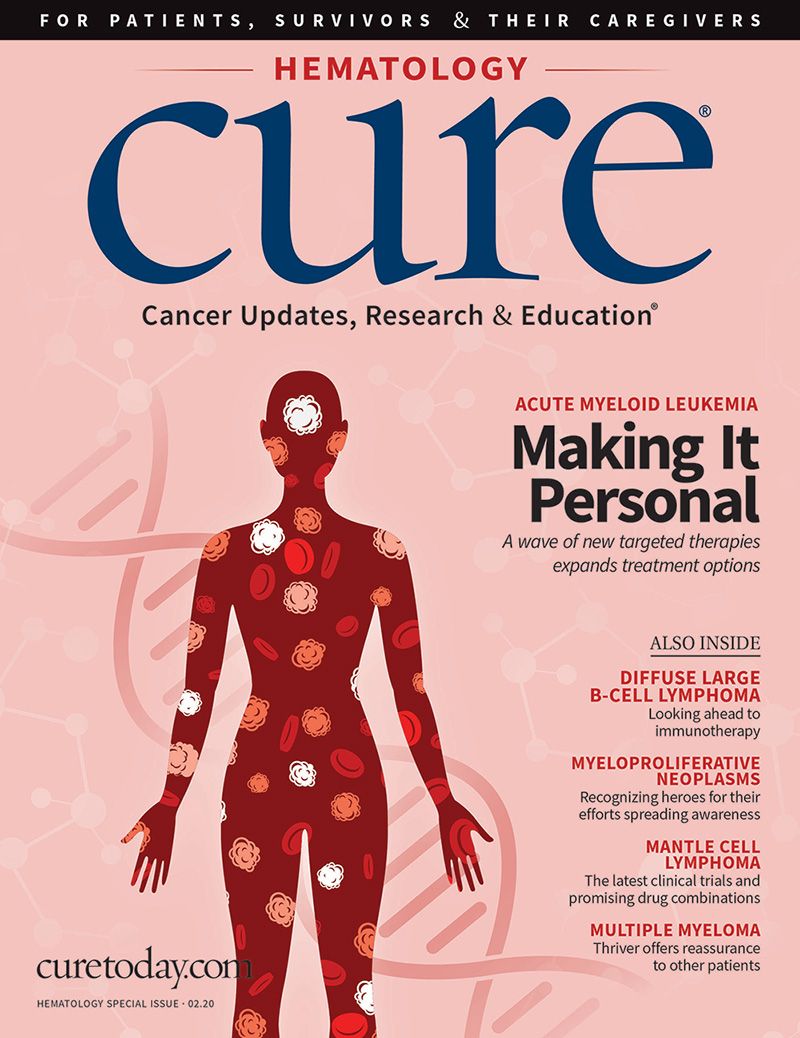Publication
Article
CURE
Speaking Out: Treatment Options May Expand in Mantle Cell Lymphoma
Author(s):
An expert sheds light on the latest therapies in clinical trials and promising drug combinations to thwart the aggressive disease.
Mantle Cell Lymphoma, an aggressive type of non-Hodgkin lymphoma, develops when the body makes abnormal B cells. To date, there is no cure for the disease, but in clinical trials, researchers continue to look for therapies that will extend the lives of patients.
In an interview with CURE®, Dr. Lee Greenberger, chief scientific officer of The Leukemia & Lymphoma Society, discussed how the latest advancements may play an important role in mantle cell lymphoma.
CURE®: Where do we stand with treatment options for mantle cell lymphoma?
Greenberger: If you’re a patient and you hear the word “incurable,” that’s a very frightening term. What it means is that, ultimately, we don’t think we can get rid of the disease, but that doesn’t mean that you cannot live with the disease. And if you can get long-term disease control, that can be just as valuable as a cure — basically, keeping (the cancer) at bay. We can do that for mantle cell lymphoma for about 5-10 years with some of the previous therapies.
Mantle cell will typically be treated with cytotoxic therapy along with an antibody — that’s Rituxan (rituximab). Typically, patients will get a response, but it won’t last, and patients come back in two years, five years, with relapsed disease. We can either re-treat or move on to newer therapies.
There have not been a lot of options for patients with mantle cell lymphoma until lately, and one of these is a chimeric antigen receptor (CAR)-T cell therapy. The results of the trial were recently presented, and they are quite exciting. In a CD19 CAR therapy, you basically take the T cells and put it in something called CD19-directed therapy so that an antibody on those engineered cells looks for the CD19 molecule on the tumor cells.
When it recognizes the molecule, it tells the T cells to turn on and multiply and kill that tumor. There are two approved therapies for diffuse large B-cell lymphoma and leukemia, so we understand the safety of CAR-T cell therapy pretty well. When you put those into mantle cell patients who have relapsed or refractory disease, you can get a very high response rate.
The tumors will shrink, and you’ll get about an 80%-90% response rate, but, more importantly, the data is showing us that about 50% of those patients will have long-term disease control about three years out, which means it looks like we have a new therapy. It has yet to be Food and Drug Administration reviewed and approved, but it is highly encouraging.
In addition to CAR-T therapy, is anything else exciting coming down the pipeline?
Yes. Imbruvica (ibrutinib) is an oral medication directed toward an enzyme called BTK (Bruton tyrosine kinase). BTK is a switch inside the mantle cells that, when it’s turned on, will activate a growth pathway and you’ll get abnormal growth of those cells. Ibrutinib is a BTK inhibitor and shuts down that pathway. The problem is that, unlike with chronic lymphocytic leukemia, where it works well, Imbruvica does not work that well in patients with mantle cell lymphoma.
However, Imbruvica plus another oral drug called Venclexta (venetoclax) when used in combination is now giving exciting results of prolonged disease control. So, taking two oral medications together that are both approved in mantle cell lymphoma might improve outcomes.
There is also something called a CDK4 inhibitor — Ibrance (palbociclib) — and it’s FDA-approved for breast cancer. The drug is being tested in combination with Imbruvica for mantle cell lymphoma with good results.
What is your best piece of advice for a patient with newly diagnosed mantle cell lymphoma?
Unlike breast cancer, which occurs in over 200,000 women per year in the United States, mantle cell lymphoma affects 5,000 patients a year. That means you need a specialized doctor to recognize what it is, and you need a good pathologist who will make the call as to whether it’s mantle cell lymphoma or not.
The best advice if you have swollen lymph nodes and fatigue is to get a blood test — that’s the start of it. But you really need to go to a trained hematologist/oncologist — someone who has seen mantle cell lymphoma multiple times — to figure out the best therapy.
Quite often, that involves going to a major medical center that has seen tens or hundreds of patients. And because most of the advances are happening in clinical trials, it’s best to go to a major medical center that is running clinical trials in mantle cell lymphoma, because you may be a candidate for some of these new therapies and avoid some of the toxic therapies.
Patients and caregivers should contact The Leukemia & Lymphoma Society’s free Information Resource Center at 1-800-955-4572, where specially trained master’s degree level nurses and social workers can answer questions about your diagnosis and direct you to resources and support services, or visit lls.org.






